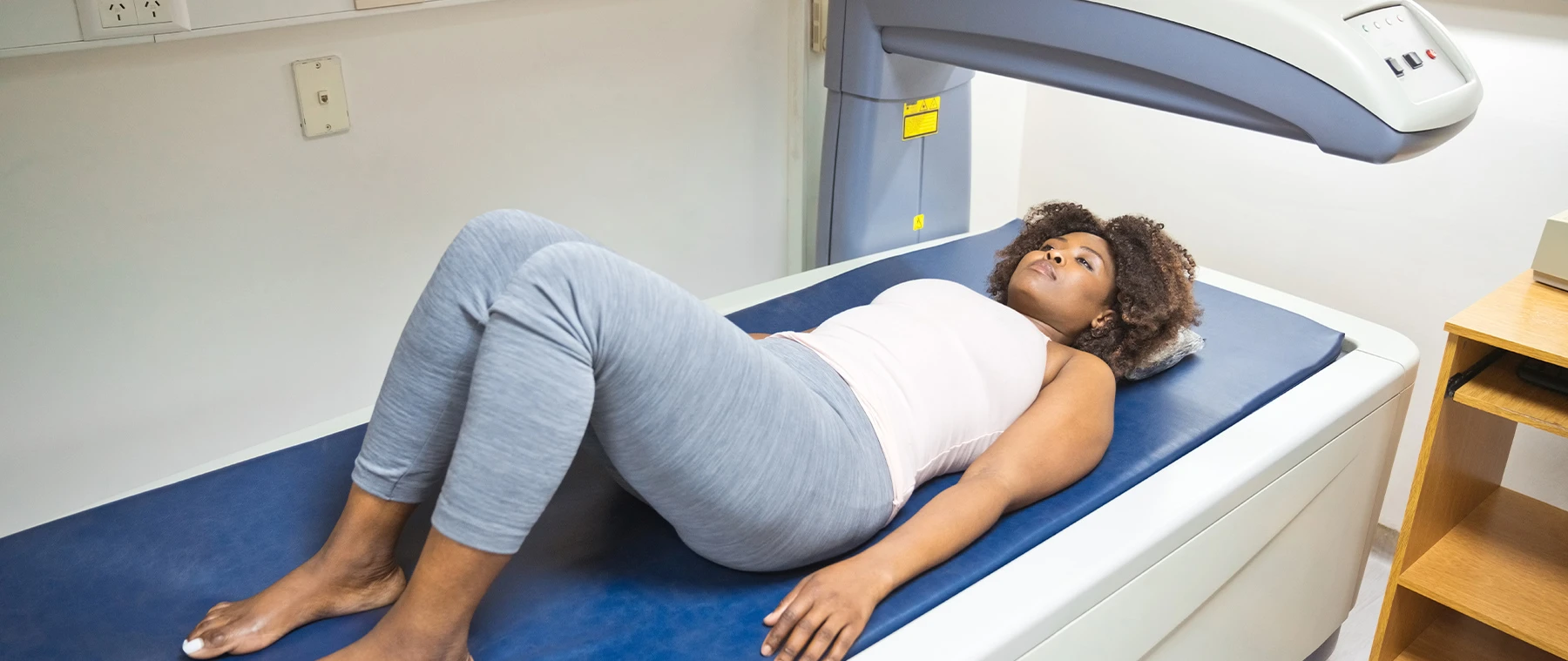What to expect
Painless quick exam
Non-invasive
Diagnostic tool for Osteoporosis
- Main Street Radiology utilizes an enhanced radiology technology called a dual-energy X-ray absorpitometry (DEXA) to accurately detect osteoporosis.
- DEXA is a fast, pain-free procedure that measures bone loss in the lower spine and hips and assesses a person's risk for developing fractures.
- DEXA is used to monitor the effects of treatment from osteoporosis or other conditions that may be causing bone loss.
Accurate Diagnosis Can Lead to Effective Treatment
As we age, our bones can lose mass and become weaker. The condition is known as osteoporosis, and it's a major cause of about 1.2 million fractures annually, with one-third of them involving the spine.
- Though women who have been through menopause are considered to be at the highest risk, rising numbers of men, younger women and even children are now being diagnosed with low bone density.
- Medical professionals agree that people of all ages who display even minor symptoms of low bone density should be tested so appropriate treatment can be prescribed. Diagnosis and treatment are both vitally important for long-term health.
- Once a patient has had their first bone fracture, they are 20% more likely to experience another within the first year, and at even a greater risk from that point forward.
- The good news is that research and technology advancements have led to more effective treatment, which reduces the potential for fractures.
What's Next?
One of our Board-certified radiologists will review and interpret the information gathered from the DEXA exam
Test Results Are Given in The Form of Two Scores:
-
- T-score: Compares the amount of bone the patient has to a young adult of the same gender.
- Z-score: Compares the amount of bone the patient has to a person in their age group and of the same gender and size.
According to the World Health Organization, these are the criteria for post-menopausal women:
-
- Normal: T-score -1.0 or above
- Osteopenia: T-score between -1.0 and -2.5
- Osteoporosis: T-score between -2.5 and below
What If Low Bone Density Is Found?
If low bone density is found, we will work closely with your physician to develop a personalized treatment plan geared toward preventing fractures.
Depending on a patient’s score, additional bone mineral density (BMD) testing may be recommended to accurately monitor bone density levels and provide early indications for treatment.
Although your referring physician will decide how often you should be tested, we recommend testing if you are:
- A woman 65 or older
- A postmenopausal woman under 65 with certain risk factors for osteoporosis
- A man 70 or older
- An adult with a fragility fracture
- An adult taking medication that is associated with low bone mass or bone loss
- An adult with a disease or condition that is associated with low bone mass or bone loss
- Someone being treated for bone loss
- Someone being considered for pharmacological therapy for bone loss
- Someone not receiving therapy, but who has evidence of bone loss
- A woman who meets any of the indications listed above and is taking estrogen
Five convenient locations
Schedule an Appointment
Online
Fill out this form and we'll contact you as soon as possible. Please do not include any personal or financial information when using this form.
By Phone
Call or text to schedule an appointment. You may text us any required information (name, date of birth, and a picture of your prescription.) and a scheduling representative will be in touch.
- Call Us: (718) 428-1500
- Text Us: (929) 430-2761
HOURS
Monday-Friday: 8 a.m. to 8 p.m
Saturday: 8 a.m. to 4 p.m.
Sunday: 8 a.m. to 2 p.m. (Flushing Office Only)

